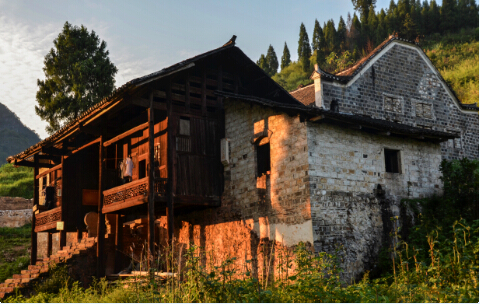In fact, the aim to bid for the World Heritage List is without doubt to better preserve the cultural sites left by our ancestors. Like Tong Mingkang, deputy director of the State Administration of Cultural Heritage of China, said in an interview with the media, a correct idea must be held in the bid for the World Heritage List, that is, it is for preservation, preservation and preservation.
A means as it is, bidding for the World Heritage List aims to strengthen historical and cultural preservation. Although it can give people a strong sense of honor, such honor is built upon cultural preservation in itself.
In cultural preservation, Laosicheng has done a lot.
In the first half of 2010, Hunan Provincial Institute of Archaeology decided to make the Tusi site of Laosicheng the priority of its archeological work in the following years, and designated Chai Huanbo, the one who explored the site in 1995, to lead the team. In the four years from then to 2014, archaeological excavation and value identification of the site saw major progresses. Mainly, an area of 4,800m2 is excavated for the archaeological purpose an area of 20,000m2 is explored; over 50,000 pieces of cultural relics of different kinds are unearthed; the distribution of each and every function area like the palace district, the government district, the streets, the tombs district, the religious district and the villa district is figured out; and an archaeological report entitled Yongshun Laosicheng is published, providing detailed materials for value studies.
 |
|
Tusi government office under the setting sun, with the light of the setting sun passing through the eaves and sprinkling on the ancient stone walls. |
In addition, experts and scholars have made progresses in a number of fields. Scientific research institutes, including Jieshou University, studied 16 key projects on the ancient site of Laosicheng in multiple fields like anthropology, history, ethnology, sociology, anthropology, architecture and folklore; and completed seven research papers, nine monographs and three general reviews, bringing to light the historical and cultural value of the Tusi sites.
However, the most crucial part in the bid for the World Heritage List lies in the relationship between the cultural site and local people.
In April 2010, a new round of archaeological excavation of Laosicheng was initiated, and 22 houses were then covering the site. To ensure the intactness of the site, Yongshun County decided to resettle these 22 farming households to Zhoujiawan Village behind a small mountain ridge. In July the same year, all the households having a good sense of discipline had moved away. Wei Minghu from one of these households said proudly, "We did our part for making Laosicheng a World Heritage site."